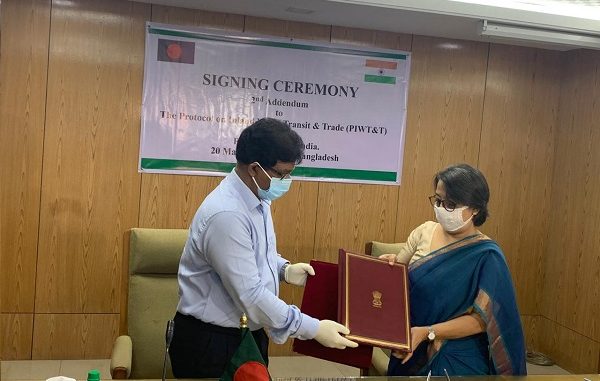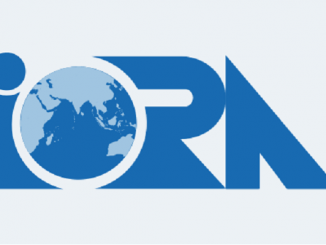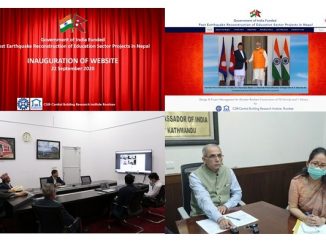
May 20: the Republic of Bangladesh and the Republic of India have a long-standing and time-tested Protocol on Transit and Trade through inland waterways of both countries. This Protocol, which was first signed in 1972 (immediately after independence of Bangladesh), is a reflection of shared history and friendship between the two countries. It was last renewed in 2015 for five years with a provision for its automatic renewal for a further period of five years giving long term assurance to various stakeholders.
The Standing Committee on the Protocol and the Shipping Secretary level Talks are the institutional arrangements between the two friendly neighbors to discuss and make the Protocol more effective. During the discussions between India and Bangladesh at these meetings held in October, 2018 in New Delhi and in December, 2019 in Dhaka, key decisions were taken on the extension of protocol routes, the inclusion of new routes and declaration of new Ports of Call to facilitate trade between the two countries. These decisions have been made effective with the signing of 2nd Addendum to the Protocol today.
Routes: The number of Indo Bangladesh Protocol (IBP) routes are being increased from 8 to 10 and new locations are also added to the existing route.
Ports of Call:Presently.There are six Ports of Call each in India and Bangladesh under the Protocol. Five more Ports of Call and two more extended Ports of Call have been added, increasing the number to eleven Ports of Call and two extended Ports of Call in each country as listed below:
Inclusion of Jogigopha in India and Bahadurabad in Bangladesh as new Port of Call will provide connectivity to Meghalaya, Assam and Bhutan. Jogigopha also becomes important, since, a Multimodal Logistics Park is proposed to be established there.The new Ports of Call would enable the loading and unloading of cargo transported on the Indo Bangladesh Protocol Route and provide a stimulus to the economic development of the new locations and their hinterland.
New opportunities on cargo movement: Under this Protocol, Inland vessels of both the countries can ply on the designated protocol route and dock at Ports of Call in each country, notified for loading/unloading of cargo. There has been significant improvement in the movement of cargo vessels in an organized manner on the Protocol route carrying both the transit cargo to North East(NE) region of India and vice-versa and export-cargo to Bangladesh. The Indian transit cargo is mainly coal, fly-ash, POL and ODC for power projects in NE region. The other potential cargo for movement is fertilizers, cement, food grains, agricultural products, containerized cargo etc. The export cargo from India to Bangladesh is mainly fly-ash which is to the tune of 30 lakhs MT per annum. Around 638 inland vessels (including 600 Bangladeshi flag vessels) completed with approximately 4000 loaded voyages annually.
It is expected that the above modifications to the Protocol will further facilitate the trade between two countries with improved reliability and cost effectiveness.
The 2nd Addendum to the Protocol on Inland Water Transit and Trade was signed at Dhaka on 20th May, 2020 by the HE High Commissioner of India in Bangladesh on behalf of the Republic of India; and by Secretary (Shipping) on behalf of People’s Republic of Bangladesh.
Source: PIB
Disclaimer: We donot claim that the images used as part of the news published are always owned by us. From time to time, we use images sourced as part of news or any related images or representations. Kindly take a look at our image usage policy on how we select the image that are used as part of the news.


